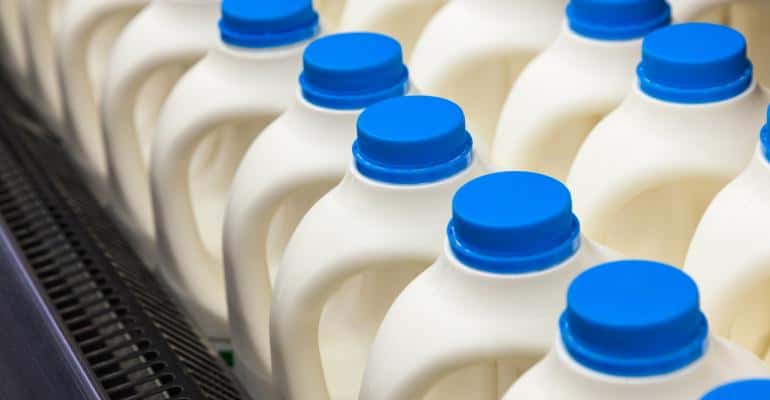
Sector grows significantly over the past two years.
The U.S. dairy industry grew significantly over the past two years, adding nearly 60,000 new jobs, increasing average wages by 11%, and increasing its total impact on the U.S. economy by $41 billion, according to the latest economic impact report from the International Dairy Foods Association (IDFA).
IDFA’s 2023 Economic Impact Study, which measures the combined impact of the dairy industry—including the milk, cheese, ice cream, cultured dairy products, and ingredients sectors—showed the U.S. dairy industry’s economic impact totaled $793.75 billion. The report, released during National Dairy Month, is conducted every two years to quantify the industry’s impact on local, state and national economies.
The newly released figures indicate that the U.S. dairy industry now supports:
- 3.2 million total jobs, including 1.078 million jobs in dairy product manufacturing, up from 1.018 million jobs in 2021
- $49 billion in direct wages for workers in the dairy industry, up from $42 billion in direct wages in 2021
- $72.0 billion in federal, state and local taxes (not including sales taxes paid by consumers), up from $67.1 million in 2021
- 3% of U.S. GDP
“The U.S. dairy industry is growing to keep pace with intense global demand, and that means more jobs, higher wages, more tax benefits, and more economic growth for communities across the United States,” said Michael Dykes, D.V.M., IDFA president and CEO. “Consumers here in the U.S. and around the world recognize U.S. dairy products for their nourishing and delicious qualities, and they are purchasing U.S. dairy products in record quantities. In turn, American dairy companies are delivering economic benefits to the communities they operate in.”
The report also demonstrates how dairy product categories contribute directly to the U.S. economy, including:
- Cheese: Adds $64.5 billion in direct economic impact and supports 59,538 dairy industry jobs
- Milk: Adds $50.9 billion in direct economic impact and supports 67,995 dairy industry jobs
- Dairy Ingredients: Adds $20.4 billion in direct economic impact and supports 16,552 dairy industry jobs
- Ice Cream: Adds $11.4 billion in direct economic impact and supports 27,066 dairy industry jobs
- Yogurt & Cultured Products: Adds $8.3 billion in direct economic impact and supports 10,867 dairy industry jobs
The growth in jobs and economic impact comes as demand for U.S. dairy continues to grow. In September 2022, the USDA reported that U.S. per capita dairy consumption jumped 12.4 pounds per person in 2021, continuing a 50-year growth trend that started in 1975 when USDA began tracking annual consumption.
The study’s findings are available in an interactive economic impact tool on IDFA’s Dairy Delivers® webpage where users can click on an interactive map of the U.S. to learn how dairy impacts their community. Just select an area of the country that interests you—options include the full U.S., any of the 50 states, or any of the 435 Congressional districts. Once you click on the state and/or district that interests you, select View/Print to generate your own detailed fact sheet or economic impact report.























